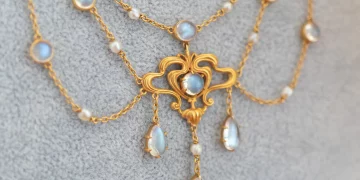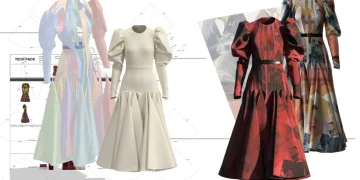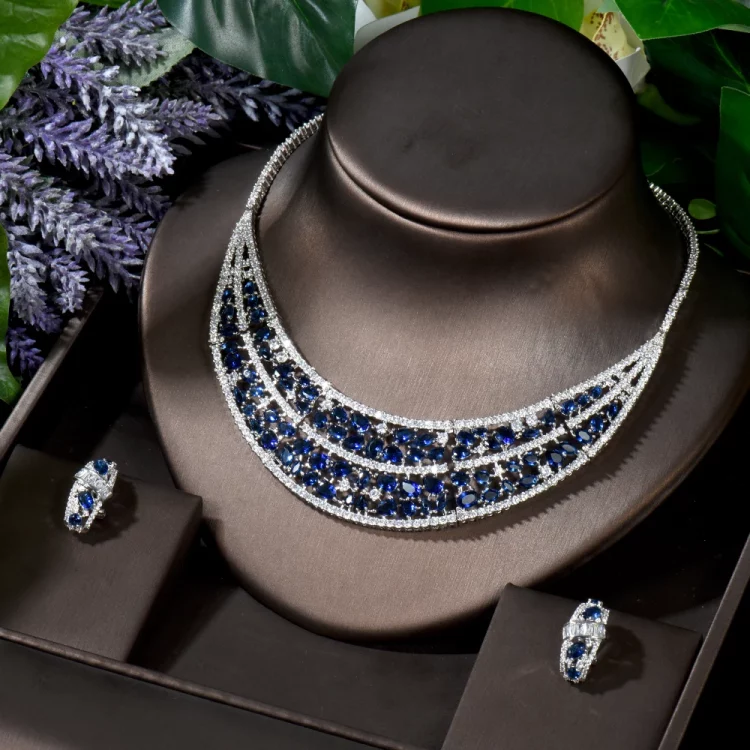The luxury jewelry market is renowned for its allure, craftsmanship, and timeless value. Yet, despite its seeming stability, the prices of luxury jewelry can fluctuate significantly. For both buyers and investors, the question often arises: What drives these price fluctuations? What factors are at play beneath the surface, shaping the dynamics of this prestigious market?
In this article, we will explore the various drivers behind the price changes in the luxury jewelry market. From shifts in consumer demand and economic trends to market speculation and geopolitical influences, the world of high-end jewelry is more dynamic than it might appear. Let’s dive into the core elements that shape and sometimes disrupt pricing trends in this luxury sector.
1. The Role of Precious Materials: Gold, Diamonds, and Gemstones
Luxury jewelry is deeply tied to its raw materials, which are often the most substantial cost drivers. The price of these materials can fluctuate based on a variety of factors, and the implications of these changes are often seen directly in the pricing of finished jewelry.
1.1 Gold and Other Precious Metals
Gold has long been the foundation of fine jewelry, valued not only for its physical properties but also its symbolic significance. The price of gold is influenced by global economic conditions, as it is often seen as a safe haven investment during times of uncertainty. When global stock markets experience volatility or when geopolitical tensions rise, demand for gold can spike, leading to higher prices.
Silver, platinum, and other metals used in luxury jewelry also experience price fluctuations, although typically these are less dramatic than gold’s. However, shifts in mining output, production costs, and demand from other industries (e.g., automotive or technology) can significantly impact the cost of these materials, which in turn affects jewelry prices.
1.2 Diamonds and Gemstones: Supply, Demand, and Scarcity
Diamonds are often regarded as the quintessential symbol of luxury, and their price volatility is often tied to both scarcity and market manipulation. The price of diamonds can vary widely depending on their cut, clarity, carat weight, and color (the “4 Cs”). But beyond these characteristics, broader economic conditions also play a role. When the global economy experiences a boom, more individuals are willing to splurge on diamonds, leading to higher demand and thus higher prices.
The supply chain for diamonds is complex, and prices can be impacted by external factors like the discovery of new mines, the closure of existing diamond mines, and political unrest in mining regions. For example, diamond prices can be significantly affected by shifts in the Russian diamond market (home to ALROSA, one of the world’s largest diamond producers) or any changes in the operations of De Beers, a long-standing player in the diamond industry.
In recent years, lab-grown diamonds have also made a splash in the market, offering a more affordable alternative to their natural counterparts. As demand for these synthetic stones increases, it creates an interesting dynamic within the diamond market, especially for investment-grade natural diamonds. While lab-grown diamonds are typically much more affordable, their growing popularity has started to influence the market for natural diamonds, leading to subtle shifts in price expectations.
1.3 Colored Gemstones: Trends, Rarity, and Speculation
Colored gemstones, such as sapphires, rubies, emeralds, and tanzanite, are also integral components of high-end jewelry, and their prices are influenced by factors similar to those affecting diamonds. However, scarcity and speculation in the colored gemstone market can create particularly volatile price swings.
In particular, rubies and emeralds have witnessed substantial price hikes over the past few years due to the limited supply of high-quality stones. As certain mines are exhausted or as political issues arise in regions where these gemstones are sourced (e.g., Myanmar’s rubies or Colombia’s emeralds), the rarity of these stones can drive prices significantly higher.
Market speculation also plays a significant role in the pricing of these stones. Investors often view rare colored gemstones as a hedge against inflation or a form of alternative investment. This has led to price surges in specific stones, driven by the influx of wealthy buyers and institutional investors looking to diversify their portfolios.
2. Global Economic Conditions: The Ripple Effect of Recessions and Booms
The broader economic environment is one of the most influential forces driving changes in the luxury jewelry market. Global recessions and economic slowdowns can significantly affect consumer behavior, with potential buyers becoming more cautious about spending on high-ticket luxury items like fine jewelry. Conversely, during periods of economic growth or booms, luxury jewelry becomes more accessible to a wider range of consumers, driving demand and, in turn, increasing prices.
2.1 Impact of Inflation
Inflation has a direct impact on the pricing of jewelry. When inflation rates rise, the cost of materials (gold, diamonds, gemstones, etc.) generally increases, leading to a corresponding rise in the final price of the jewelry. Additionally, higher inflation can reduce consumers’ purchasing power, which may either reduce demand for luxury jewelry or shift demand toward more affordable luxury (such as mid-tier luxury brands).
2.2 The Wealth of Emerging Markets
Another critical economic factor influencing the luxury jewelry market is the rise of emerging markets, especially in Asia and the Middle East. As wealth increases in these regions, the demand for high-end, luxury jewelry surges, pushing prices higher. The demand from China and India, two of the fastest-growing economies in the world, has had a profound effect on the jewelry market, especially in the realm of diamonds and colored gemstones.
2.3 Currency Exchange Rates
Luxury jewelry is a global commodity, with major producers and retailers based in different countries. As such, fluctuations in currency exchange rates can have a significant impact on the pricing of jewelry across markets. For instance, a strong U.S. dollar may make jewelry more expensive in other parts of the world, while a weaker dollar could have the opposite effect. Retailers and manufacturers must constantly adjust their pricing strategies based on currency fluctuations to ensure they remain competitive and profitable.

3. Changing Consumer Preferences and Trends
The luxury jewelry market is not just affected by economic factors—shifting consumer preferences also play a key role in driving market fluctuations. As consumer values evolve, so too do the types of jewelry that are in demand.
3.1 Millennial and Gen Z Preferences
Younger generations, such as Millennials and Generation Z, have become increasingly influential in shaping the jewelry market. This demographic tends to place greater emphasis on sustainability, ethical sourcing, and personalization. In response to these demands, luxury jewelry brands are introducing sustainable collections, focusing on conflict-free diamonds, and offering more customized options.
These evolving preferences often influence the types of materials used in luxury jewelry, such as the rising popularity of lab-grown diamonds and the increasing demand for sustainable and ethically sourced gemstones. As a result, these shifts can lead to price fluctuations as the industry adapts to new consumer expectations.
3.2 The Influence of Social Media and Celebrity Endorsements
The power of social media and celebrity endorsements cannot be understated when discussing the fluctuations in luxury jewelry pricing. Influencers and celebrities have the ability to create trends that cause sudden surges in demand for specific pieces, collections, or styles of jewelry. Jewelry worn by royalty, A-list celebrities, and fashion icons often sees an immediate spike in demand, which can push up prices.
For example, when famous personalities like Meghan Markle or Beyoncé wear certain pieces, they often influence their fans and followers to seek similar items, resulting in an increase in demand—and price.
4. Geopolitical Factors: Politics, Trade, and Market Access
Geopolitical events, such as trade wars, sanctions, and political instability, can significantly impact the luxury jewelry market. As many gemstones and metals are sourced from regions with political instability (e.g., African countries for diamonds or Myanmar for rubies), any disruption in the supply chain can cause prices to rise.
Additionally, tariffs and trade restrictions can increase the cost of importing raw materials and finished jewelry, which often results in higher retail prices. The global nature of the jewelry market means that even localized political events can have widespread ripple effects on pricing.
Conclusion: Navigating the Complex Forces Behind Jewelry Price Fluctuations
The price fluctuations in the luxury jewelry market are driven by a complex interplay of factors, ranging from the cost of raw materials and economic conditions to shifting consumer preferences and geopolitical events. As the market continues to evolve, these forces will continue to shape and influence the pricing dynamics of the luxury jewelry sector.
For consumers and investors, understanding these factors is crucial in navigating the ever-changing landscape of luxury jewelry. By recognizing the underlying drivers, one can better predict pricing trends, make informed purchasing decisions, and even make smart investment choices in the world of high-end jewels.

















































